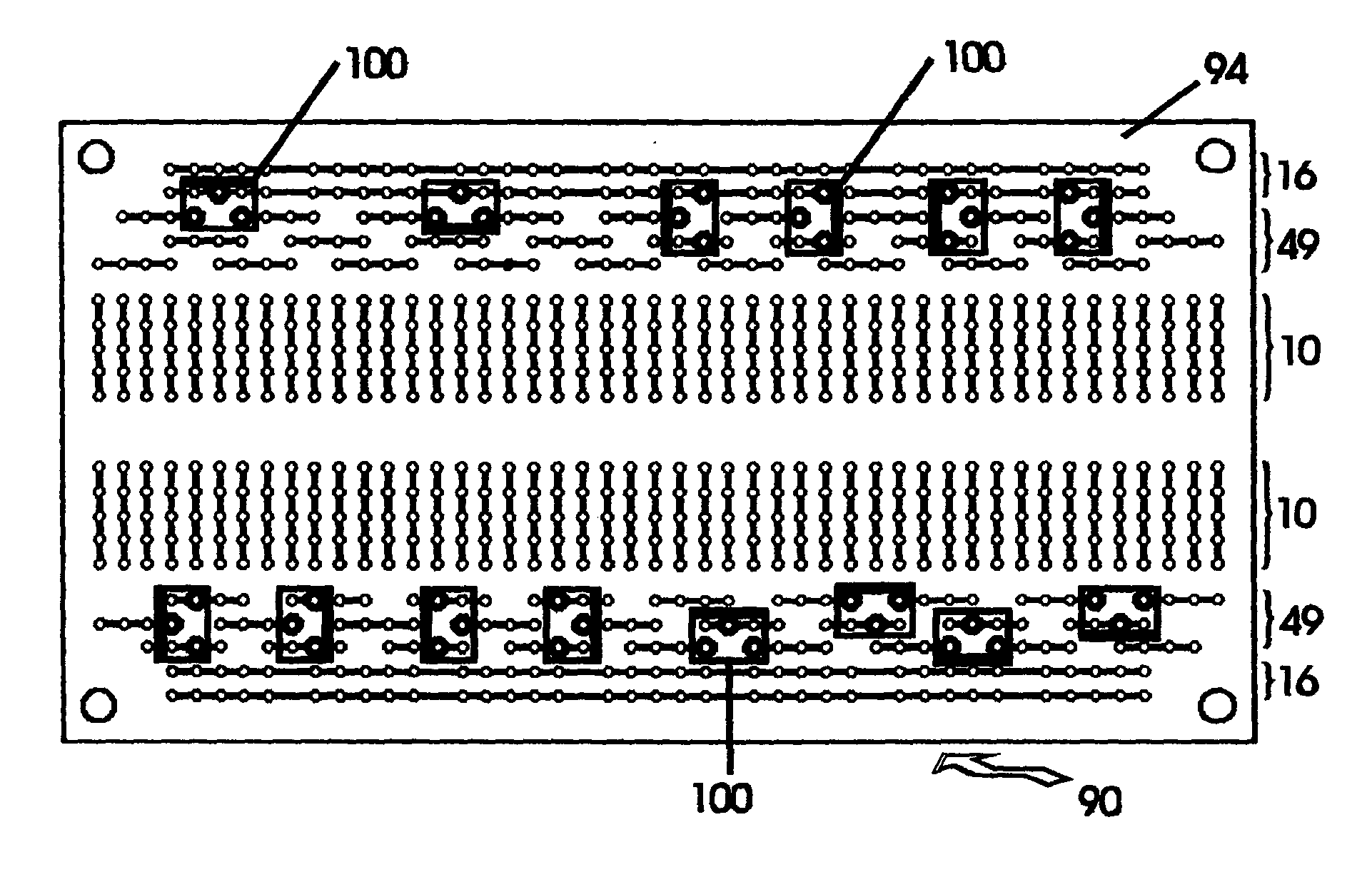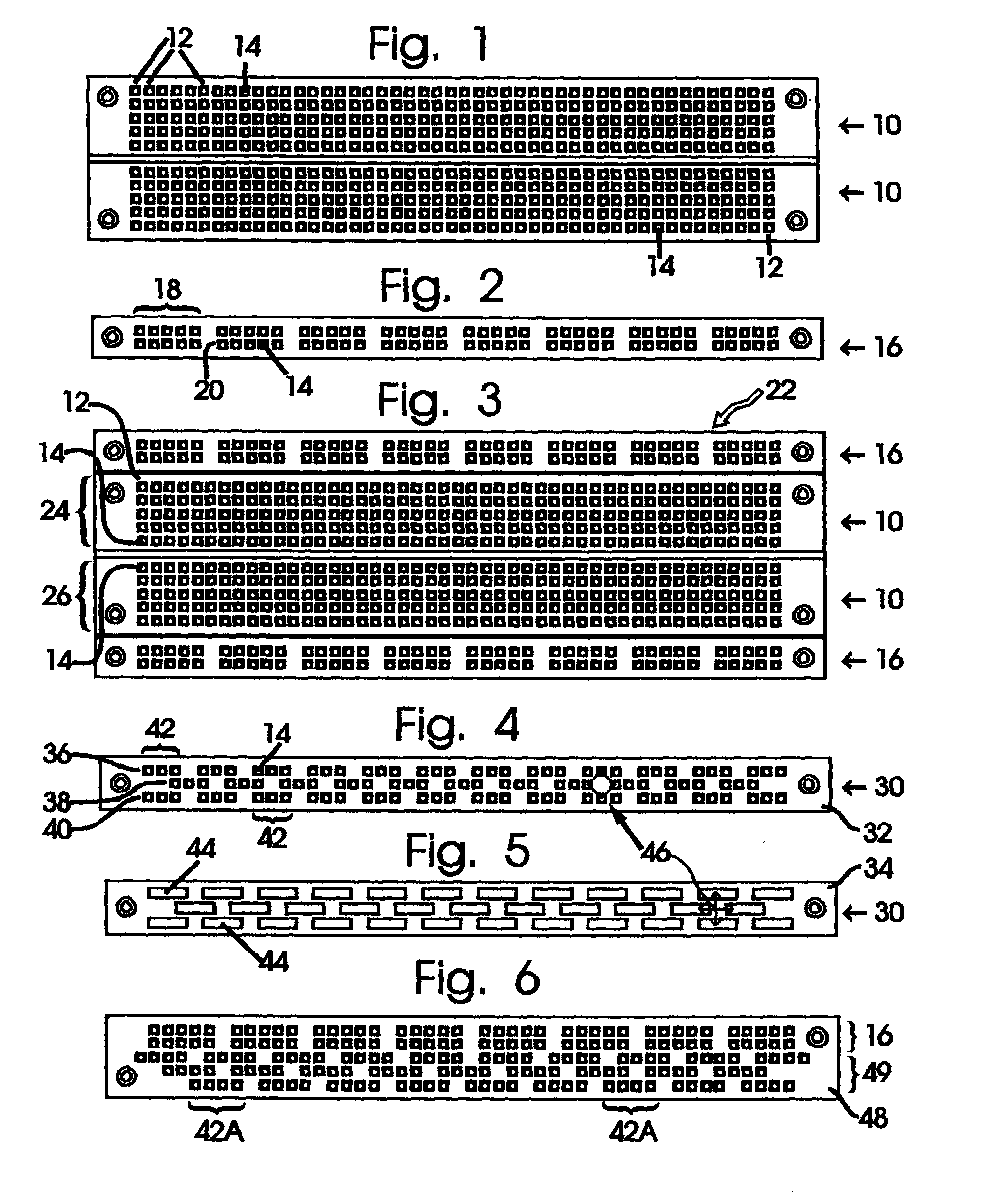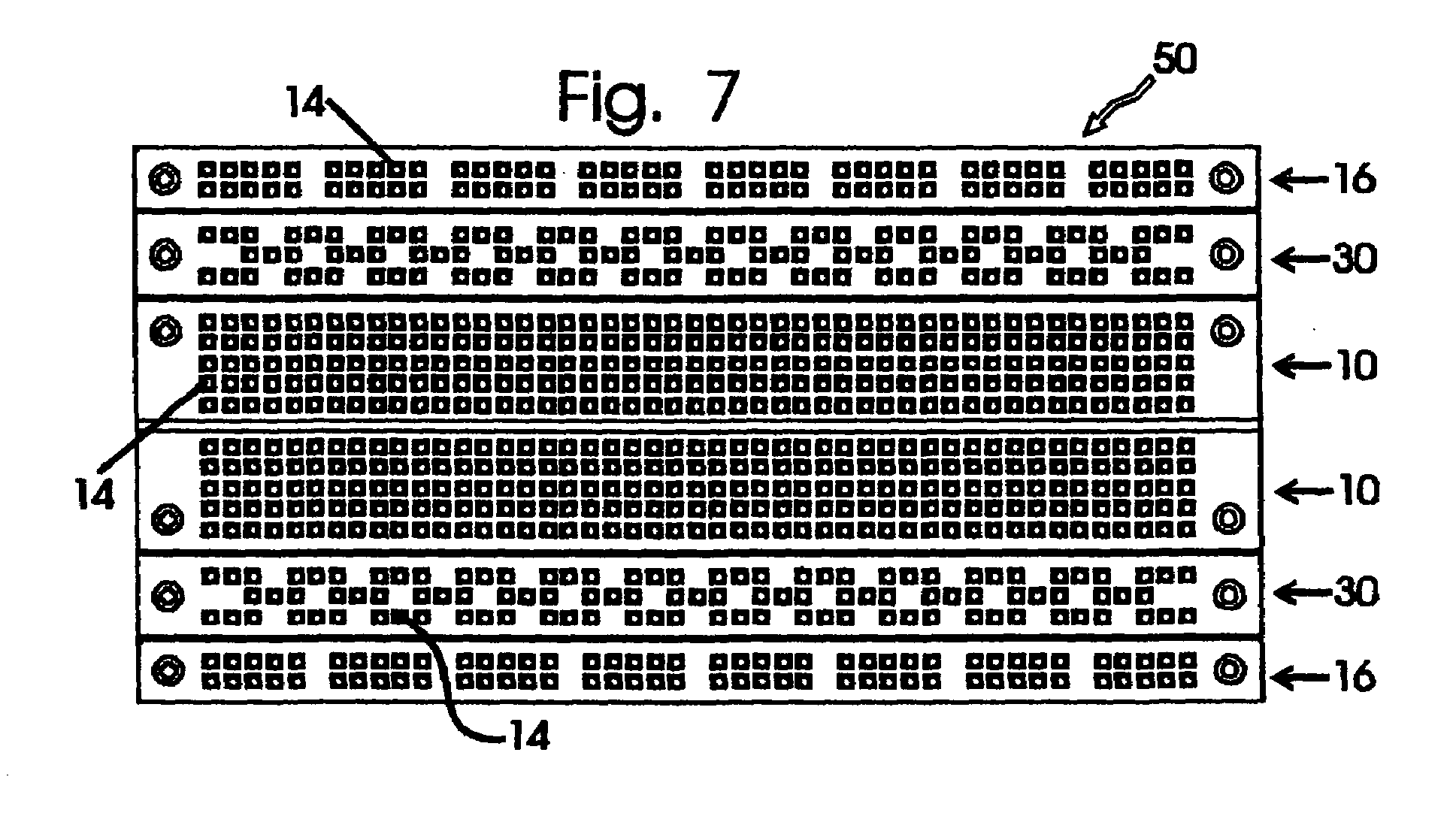Apparatus, method and system for interfacing electronic circuits
a technology of electronic circuits and sockets, which is applied in the direction of programmable/customizable/modifiable circuits, instruments, educational models, etc., can solve the problems of increasing the probability of incorrect connections being made in the circuit, occupying valuable space, and reducing the number of integrated circuits that can be placed on the board, etc., to achieve convenient and convenient use, easy to follow, and compact
- Summary
- Abstract
- Description
- Claims
- Application Information
AI Technical Summary
Benefits of technology
Problems solved by technology
Method used
Image
Examples
Embodiment Construction
[0050]In FIG. 1 there are illustrated two prior art terminal strips 10 each comprising a plurality of rows 12 of square pinholes 14 and with each row 12 containing five (5) square pinholes.
[0051]In FIG. 2 there is illustrated a prior art distribution strip 16 comprising eight (8) pairs 18 of rows 20 of square pinholes 14 and FIG. 3 is a combination of terminal strips 10 and distribution strips 16 arranged to form a prior art breadboard 22 similar to the breadboard shown in U.S. Design Pat. No. Des. 235,554.
[0052]Each small square pinhole 14 in the terminal strip 10 represents an electrical contact point 14 including an electrical clip which is hidden from view and which can be of the type shown in the Lin U.S. Pat. No. 5,014,163 or in the Portugal Des. 235,554. Each row 12 of five contact points 14 viewing same in the vertical direction are electrically connected to each other by a conductor strip therebeneath and hidden from view, and each one row 12, with five contact points 14 be...
PUM
| Property | Measurement | Unit |
|---|---|---|
| Length | aaaaa | aaaaa |
| Distance | aaaaa | aaaaa |
| Distribution | aaaaa | aaaaa |
Abstract
Description
Claims
Application Information
 Login to View More
Login to View More - R&D
- Intellectual Property
- Life Sciences
- Materials
- Tech Scout
- Unparalleled Data Quality
- Higher Quality Content
- 60% Fewer Hallucinations
Browse by: Latest US Patents, China's latest patents, Technical Efficacy Thesaurus, Application Domain, Technology Topic, Popular Technical Reports.
© 2025 PatSnap. All rights reserved.Legal|Privacy policy|Modern Slavery Act Transparency Statement|Sitemap|About US| Contact US: help@patsnap.com



